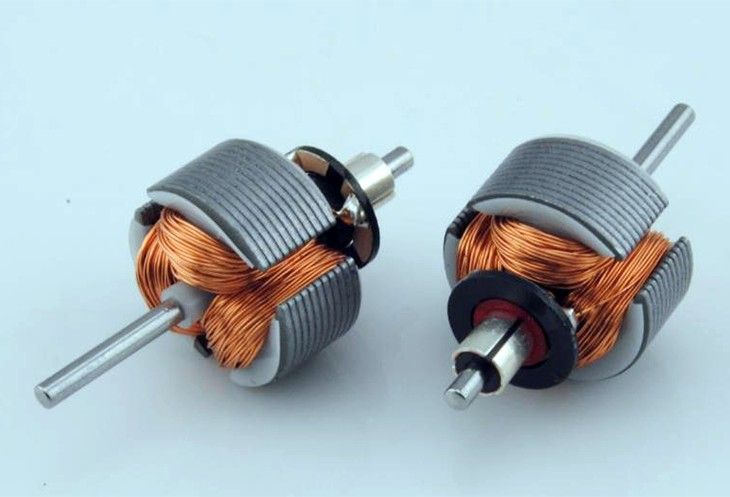I elektrisk udstyr med forbedret sikkerhed, såsom eksplosionssikre motorer, transformere, elektromagnetiske ledninger, og forkoblinger til lysstofrør, en del omfatter indvendige viklinger. Kravene til disse viklinger, både mekanisk og elektrisk, er højere end dem for standardviklinger.

Generelt, den isolerede ledning, der bruges til at vikle disse spoler, skal være dobbeltisoleret, og spolens nominelle diameter må ikke være mindre end 0,25 mm.
Til den emaljerede tråd, der bruges til at vikle disse spoler, det anbefales at bruge GB/T6109.2-2008 “Polyester emaljeret rund kobbertråd, Klasse 155,” GB/T 6109.5-2008 “Polyester-imid emaljeret rund kobbertråd, klasse 180,” GB/T 6109.6-2008 “Polyimid emaljeret rund kobbertråd, Klasse 220,” eller GB/T6109.20-2008 “Polyamid-imid komposit polyester eller polyester-imid emaljeret rund kobbertråd, Klasse 220.”
Derudover, karakter 1 emaljeret rund kobbertråd som specificeret i disse standarder kan bruges, forudsat at den består de relevante test, der er beskrevet i standarderne.
Efter vikling, et passende imprægneringsmiddel bør anvendes til at forbedre viklingernes isoleringsegenskaber.
Imprægneringsprocessen skal følge producentens specificerede metode, ved hjælp af teknikker som dypning, rislende, eller vakuumtrykimprægnering (VPI) at udfylde hullerne mellem viklingstråde og sikre stærk vedhæftning. Hvis imprægneringsmidlet indeholder opløsningsmidler, imprægneringen og tørringen skal udføres to gange for at tillade opløsningsmiddel fordampning.
Generelt, metoder som sprøjtning eller belægning til isolering af viklinger anses for upålidelige for eksplosionssikkert elektrisk udstyr. Der bør lægges tilstrækkelig vægt på dette i ingeniørpraksis.
i øvrigt, til højspændingsviklinger, de imprægnerede viklinger skal behandles med anti-corona maling for at forhindre yderligere farer forårsaget af corona-udledninger.
I elektriske enheder med forbedret sikkerhed, om motorer, elektromagnetiske spoler, eller andet udstyrs spoler, de bør generelt være udstyret med temperatur beskyttelsesanordninger for at forhindre overskridelse af grænsetemperaturer under normal drift eller anerkendte unormale forhold.
Hvis en vikling ikke overskrider grænsetemperaturen under kontinuerlig overbelastning (såsom en motorrotorlås), eller hvis en vikling ikke er udsat for overbelastning (som en ballast til lysstofrør), så kræver det ikke en temperaturbeskyttelsesanordning.
Når forbedret sikkerhed elektrisk udstyr er udstyret med temperaturbeskyttelsesanordninger, disse kan installeres enten internt eller eksternt. Uanset hvad, beskyttelsesanordningen skal have passende eksplosionssikker type og bør vurderes i forbindelse med det beskyttede udstyr.
 Shenhai eksplosionssikker
Shenhai eksplosionssikker
